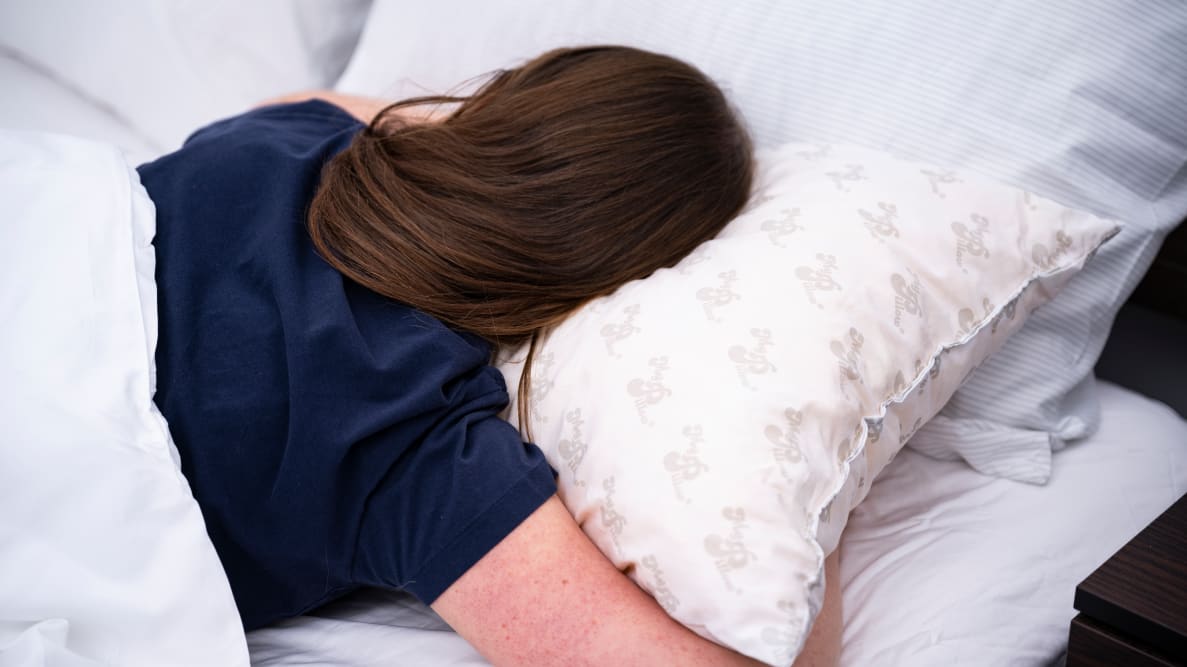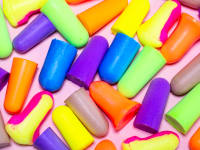Pros
-
No smell
-
Machine washable
Cons
-
Lumpy and poorly distributed fill
-
Insufficient loft
-
Uncomfortable
What is MyPillow?
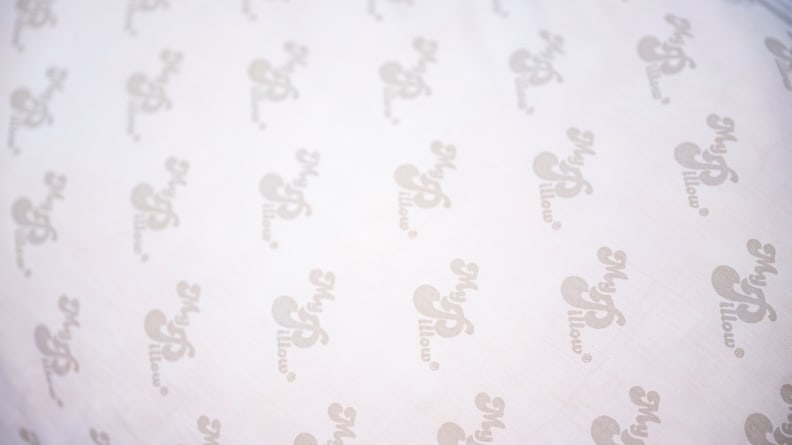
Per company lore, founder Mike Lindell struggled to find a pillow that he liked, and one night, in 2004, he had a dream about making his own.
He wanted to create something that would answer all his pillow problems—like waking up with sore arms and a stiff neck. He created a pillow with a fill that the company claims “adjusts to your individual sleep needs regardless of sleeping position.” Lindell built the company in his native state of Minnesota and sold his pillows locally for years, until he aired his first national infomercial in 2011.
The pillows feature the company’s “patented interlocking fill,” which is its main claim to fame and the reason behind the pillow’s breathability, adjustability, and supportiveness. However, the company’s website doesn’t provide any additional information on what that actually means.
MyPillow’s offerings have expanded to include sheets, mattress toppers, blankets, linens, dog beds, and more. The company sells several types of pillows, but we’ll focus on the one you’ve likely heard about already: the Classic MyPillow.
Rather than offering the consumer the option to physically add or remove filling (like our best bed pillow) from Coop Home Goods, the pillows come in firmness levels. To determine which is best for you, the company suggests using its chart system that recommends firmness based on a small chart with two columns labeled “men” and “women,” and rows corresponding to T-shirt size (yes, they really base your pillow selection off that).
The Classic pillow comes in two firmness options: “medium” and “firm.” The website specifies that this pillow’s covering is made with 100% cotton, and mentions that the filling of the pillow is constructed with all new, 100% shredded polyurethane foam.
The company suggests that customers switching from a down or feather pillow should decrease their suggested fill firmness by one level, as down is generally softer than foam. Admittedly, this could require guesswork, but MyPillow does provide charts across all its pillow offerings to make it a bit easier to choose your desired firmness level.
Unfortunately, we did note that charts vary across pillows—the Classic only mentions medium and firm levels, while other pillows, like the Premium Giza MyPillow, use loft as a firmness metric. The variety of firmness charts could be confusing for any first-time MyPillow buyers.
How much does MyPillow cost?
The Classic is the least expensive option of all MyPillow’s offerings, coming in at $29.98 for a standard-size pillow on Amazon ($49.98 on their website) and $39.98 for a king-sized version on Amazon ($79.98 on their website).
The full price is not far off from other shredded-foam pillows we’ve tested from the likes of Brooklinen, Tempur-Pedic, and Coop Home Goods. But there are times when MyPillow offers steep promotions, which can bring the price of the Classic to a fraction of the cost, as low as $19.98.
However, we’ve perused the site for a promo code multiple times and always came up empty-handed. Eventually, one writer found one after digging through the company’s Instagram, but it was still difficult, as the coupon was buried in a caption.
How did we test MyPillow?
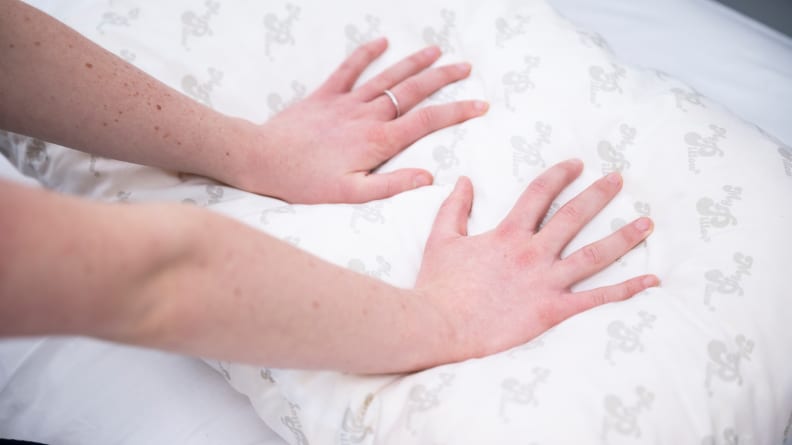
We tested the MyPillow Classic—one of the company’s most popular options—in the “medium” or least firm option, as our testers have smaller frames. We had two testers sleep on the MyPillow for several nights, alternating between side, stomach, and back sleeping to assess how well it performed for each position. We considered variables ranging from overall comfort to whether it gave sufficient neck support.
After these at-home tests, we sent the pillow to our lab for additional testing. Our in-house scientist used an electric blanket to measure heat retention, weighed the pillow down overnight to assess its ability to spring back come morning, and washed it to make sure it could withstand water-logging and drying.
What we like about MyPillow
It’s fully washable
One of the pillow’s biggest upshots is that you can put the whole thing in the washer and dryer—fill and all. While some pillows’ textures change after being washed, MyPillow came out feeling about the same as it went in. (The fabric cover was another story, but we’ll get to that.)
It’s thin enough for stomach sleepers
The MyPillow Giza Elegance is alright for stomach sleepers, as it lands on the flatter side of the spectrum. It might also work for side sleepers with a small frame (again, our testers did), but it would likely require routinely redistributing and fluffing the pillow, or even folding it to fill the space between head and shoulder. In other words, it’s workable if you put in a little bit of elbow grease. But as testers and consumers, we want products to do the work for us, not the other way around.
Bear in mind, the company’s sizing scheme is less than ideal. We purchased the least-filled option, but perhaps a MyPillow with more stuffing would have yielded a different impression.
What we don’t like about MyPillow
The sizing chart and guidelines aren’t practical
To begin with, the company’s sizing chart and guidelines are misleading and just downright illogical. Take, for example, a petite woman who might have a larger chest and wear a bigger T-shirt to accommodate her frame. Despite her clothing size, she may have narrow shoulders and be better off with a less-filled pillow.
In our experience, pillow fill levels correlate more to individual preferences and sleep position than gender and T-shirt size. All stomach sleepers, for example, no matter how big or small they are, will want to opt for a thinner pillow so they aren’t craning their neck overnight. Back sleepers also benefit from a slimmer profile, while side sleepers will need more loft to keep their heads and spines aligned overnight.
It’s not really adjustable
Though the brand claims its pillows are adjustable—because you can redistribute the fill and squeeze or squish them to reshape—they’re not actually adjustable. We’d keep that description for pillows that allow you to take out or add filling until you reach the comfort level that best suits you.
It wasn’t good for side sleeping
Although the MyPillow sample we received was the suggested size, we found it inadequate for side sleeping. It waffled under pressure—one tester described her head as one pole of a magnet, and the stuffing as the other. Wherever her head went, the stuffing was repelled. She didn’t see this sleeping situation being viable in the long term. For users seeking better spinal alignment or pressure relief, memory foam or orthopedic pillows may offer a more consistent experience.
It lacked structure and wasn’t supportive
The pillow also seemed devoid of any structural integrity—the stuffing tends to fall flat after a couple of uses. And even after redistributing and fluffing, both our testers found that the pressure of their heads caused it to spread out again. The same issue was also apparent in lab test results.
It’s lumpy
The pillow was also among the lumpiest pillows we tested. The best way one tester found to describe it is that it’s like sleeping on overripe peaches or cherries—random, differently sized lumps that were also squishy. Neither tester was a fan of the uneven surface.
The fabric casing didn’t fare well in the wash
Though the foam withstood our wash test, the fabric encasement was another story. The pillow encasement looked like it had been dunked in drool. (Sadly, one of our testers would know, as she is a chronic drooler.)
The stuffing also shows through the thin fabric cover. Given the fabric's lightness, we wonder how well the pillow will hold up in bed over time. (Perhaps we're being overly skeptical, as one buyer commented that their Classic MyPillow lasted until their dog tore it up).
Moreover, we noticed yellowish staining on certain parts of the pillow after washing, primarily along the seams. We’re not sure what those came from—all we know is that it’s not aesthetically appealing.
The MyPillow website is difficult to navigate
Simply ordering the pillow could prove frustrating. The site lacks information on the product itself, and finding a clearly advertised promo code was incredibly challenging. For example, our testers couldn’t determine what the company meant by “patented interlocking foam” because this information wasn't available on the site.
In addition, the variety of firmness charts across different pillows is confusing (and not the most reasonable), especially if you want to try, for instance, the Classic MyPillow and Premium Giza at comparable firmness levels.
Should you buy a MyPillow?
Nah, skip it.
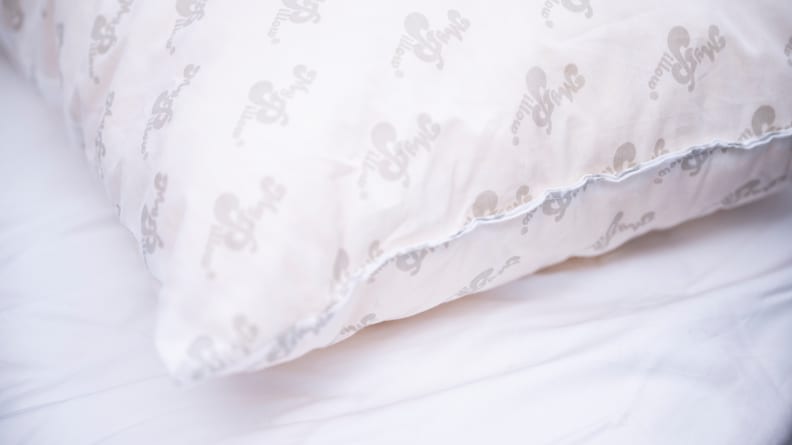
If it isn't abundantly clear already: We do not recommend MyPillow to our readers. We believe many people won’t find it sufficiently supportive for maintaining spinal alignment overnight. It felt far too lumpy, plus the quality seems questionable.
Of course, there are exceptions. People who prefer to sleep on their stomachs might find that it works, and those with allergies could rejoice in its wash-and-dryability. However, there are better options available that offer far more comfort, support, customization, and comparable pricing.
Meet the testers
The Reviewed staff is based in the heart of Cambridge, MA. Backed by our knowledgeable writers and rigorous test labs, we're working hard to make sure you can make the right decisions about what to buy.
Lindsey writes about sleep, lifestyle, and more for Reviewed. In her waking hours, she likes to spend time outside, read, cook, and bake. She holds a master’s in journalism from Boston University and bachelors' degrees in English Literature and Anthropology from the University of Utah.

Natalie Nguyen
Stack Commerce Junior Editor
Natalie Nguyen is a full-time writer and editor at StackCommerce. She's based in New York City and graduated with a B.A. in English and minors in Political Science and Art History from Saint Joseph's University. Natalie has written and edited for publishers like Popular Science, New York Post, PCMag, and Boing Boing on everything from lifestyle to technology products.
When she isn't writing content, she loves making matcha, working out, overspending on coffee, and finding the best pastries in the city.
Checking our work.
Our team is here to help you buy the best stuff and love what you own. Our writers, editors, and experts obsess over the products we cover to make sure you're confident and satisfied. Have a different opinion about something we recommend? Email us and we'll compare notes.
Shoot us an email